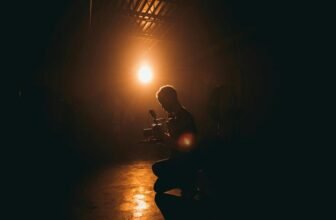
When starting out in photography, selecting the right camera is crucial to honing your skills and capturing stunning images. Understanding which features suit your needs and learning about the different types of cameras available can set you on the path to becoming a proficient photographer. As you explore the realm of beginner-friendly cameras, consider how each option aligns with your photography goals and aspirations. The initial decision you make could pave the way for an exciting journey into the world of photography, where capturing moments becomes an art form.
Entry-Level DSLR Cameras
If you're just starting out in photography, an entry-level DSLR camera can be a great choice to hone your skills. These cameras offer versatility, manual control options, and interchangeable lenses that can help you learn and grow as a photographer. One key advantage of DSLRs is their optical viewfinders, which provide a clear, real-time view of your subject. This can be beneficial for composing shots and understanding the relationship between aperture, shutter speed, and ISO.
When choosing an entry-level DSLR, consider models like the Nikon D3500 or the Canon EOS Rebel T7. These cameras are user-friendly, affordable, and capable of capturing high-quality images. Additionally, they often come with helpful beginner-friendly features like guided shooting modes and in-camera tips.
Experimenting with different settings and techniques on an entry-level DSLR can help you understand the fundamentals of photography and develop your creative eye. As you progress, you can explore more advanced equipment and techniques to further enhance your skills.
Budget-Friendly Mirrorless Options
When exploring budget-friendly mirrorless options for beginners in photography, consider compact models that offer advanced features without breaking the bank. Mirrorless cameras are a great choice for new photographers due to their lightweight design and ease of use.
One excellent option to consider is the Sony Alpha a6000, known for its fast autofocus system and impressive image quality. Another top pick is the Fujifilm X-T200, which offers a user-friendly interface and a wide range of creative features. The Canon EOS M50 is also worth mentioning for its versatile performance and excellent video capabilities.
These mirrorless cameras provide a more compact alternative to traditional DSLRs without compromising on image quality or functionality. When starting out in photography, investing in a budget-friendly mirrorless camera can be a smart choice to hone your skills and explore the world of photography without a hefty price tag.
Compact Point-and-Shoot Cameras
Consider opting for compact point-and-shoot cameras for their simplicity and convenience in capturing moments effortlessly. These cameras are perfect for beginners due to their user-friendly nature and automatic settings that take the guesswork out of photography. With compact point-and-shoot cameras, you can simply point, shoot, and let the camera do the rest. They're lightweight, portable, and easy to carry around, making them ideal for everyday use and travel photography.
Despite their small size, compact point-and-shoot cameras pack a punch when it comes to image quality. Many models offer high-resolution sensors, optical zoom capabilities, and advanced features like image stabilization and face detection. Some even come with built-in Wi-Fi or Bluetooth connectivity for easy sharing of photos on the go. Additionally, these cameras are often more budget-friendly compared to other types of cameras, making them a great starting point for beginners looking to explore the world of photography without breaking the bank.
Beginner-Friendly Features to Look For
Look for essential beginner-friendly features when choosing your first camera to help kickstart your photography journey smoothly.
Firstly, opt for a camera with easy-to-use controls and menus. This will make navigating settings and making adjustments a breeze as you learn the basics of photography.
Look for a camera with built-in guides or tutorials to assist you in understanding different features and techniques.
Additionally, choose a camera with good autofocus capabilities to help you capture sharp images without worrying too much about manual focus.
Image stabilization is another crucial feature to consider, especially for beginners who may struggle with keeping the camera steady. Having this feature can greatly improve the sharpness of your photos, especially in low-light conditions or when using zoom lenses.
Lastly, consider a camera with a flip-out screen, as it can be handy for shooting at different angles or taking selfies.




